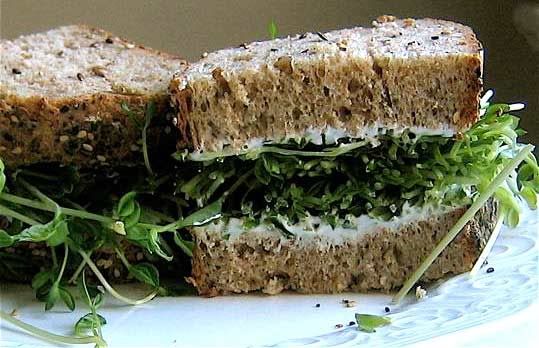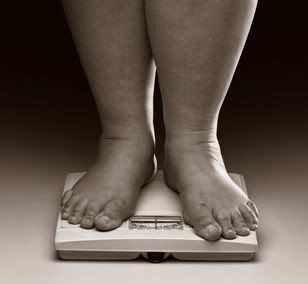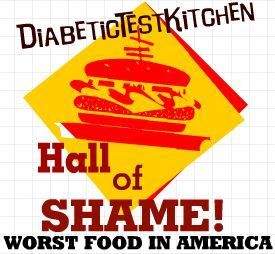Renewable Green Super Food
Its not easy these days to eat healthy in America. Having a renewable source of 100% organic super food in your kitchen can help anyone on a budget. Sounds complicated? Its really not.

Obese Underestimate Their Weight Study Finds
The study of women and children conducted at Columbia University Medical Center in New York City found that faulty body image was far more prevalent among the heaviest participants than people of normal weight. "The implications of this is the overwhelming impact of obesity on children who are growing up in communities where obesity and overweight is the norm rather than the exception.

CDC: Bread Beats out Chips as Biggest Salt Source
 Philip J Walter
Philip J Walter
Bread and rolls are the No. 1 source of salt in the American diet, accounting for more than twice as much sodium as salty junk food like potato chips.
That surprising finding comes in a government report released Tuesday that includes a list of the top 10 sources of sodium. Salty snacks actually came in at the bottom of the list compiled by the Centers for Disease Control and Prevention.
"Potato chips, pretzels, and popcorn — which we think of as the saltiest foods in our diet — are only No. 10," said CDC Director Dr. Thomas Frieden.
Breads and rolls aren't really saltier than many of the other foods, but people tend to eat a lot of them, said Mary Cogswell, a CDC senior scientist who co-authored the report.
Salt is the main source of sodium for most people, and sodium increases the risk of high blood pressure, a major cause of heart disease and stroke. Health officials say most Americans get too much salt, mostly from processed and restaurant foods — not added from the salt shaker.
Experts have known that the sodium in breads and certain other foods can add up, but even CDC officials were amazed that just 10 foods are responsible for 44 percent of the sodium consumed.
"It's possible to eat a whole bunch of sodium without it seeming salty," noted John Hayes, an assistant professor of food science at Penn State, who was not involved in the report.
null
AP
A customer samples some fresh baked bread at... View Full Caption
A customer samples some fresh baked bread at a grocery store in Cincinnati on Tuesday, Feb. 7, 2012. Nearly all Americans consume much more sodium than they should, according to a report from the Centers for Disease Control and Prevention released Tuesday, Feb. 7, 2012. Most of the sodium comes from common restaurant or grocery store items. Some foods that are consumed several times a day, such as bread, add up to a lot of sodium even though each serving is not high in sodium. (AP Photo/Al Behrman) Close
According to the CDC, breads and rolls account for about 7 percent of the salt that the average American eats in a day. Next on the list: cold cuts and cured meats; pizza; fresh and processed poultry; soups; fast-food hamburgers and sandwiches and cheese.
Rounding out the list — and accounting for about 3 percent each — are spaghetti and other pasta dishes; meatloaf and other meat dishes and snacks like potato chips and pretzels.
Dietary guidelines recommend no more than 2,300 milligrams of sodium a day, equal to about a teaspoon of salt. Certain people, such as those with high blood pressure, should eat even less. But average sodium consumption in the U.S. is around 3,300 milligrams, the CDC study found. Only 1 in 10 Americans meet the teaspoon guideline.
The amount of sodium in food types can vary. For example, a slice of white bread can have between 80 and 230 milligrams of sodium. A cup of canned chicken noodle soup has between 100 and 940 milligrams and 3 ounces of luncheon meat has between 450 and 1,050 milligrams. A small 1 ounce bag of potato chips ranges from 50 to 200 milligrams.
The new CDC report is based on surveys of more than 7,200 people in 2007 and 2008, including nearly 3,000 children. Participants were surveyed twice, each time answering detailed questions about what they had eaten over the previous day. Researchers then broke down what they ate into categories, and assigned sodium amounts.
Salt reduction has become a recent focus of public health campaigns, and some major food makers have taken steps or announced plans to gradually reduce sodium in their products.
CDC officials — who have long encouraged people to eat more fruits and vegetables — stopped short of advising people to lay off the bread. But they are encouraging consumers to read labels and, for example, buy brands of bread that have lower sodium.
"People can choose how much salt to add to their food at the table. They can't take it out once it's there," Frieden said.
There's another way to consume less sodium. "Eat smaller portions," Hayes said.
Diabetes takes toll on women's hearing
 Philip J Walter
Philip J Walter
Diabetes is associated with hearing loss in women, especially if the blood sugar disease isn't well-controlled, new research indicates.
The study, done by researchers at Henry Ford Hospital in Detroit, examined the medical records of 990 men and women who had hearing tests between 2000 and 2008. Patients with diabetes were divided into two groups: well-controlled and poorly controlled.
Among women aged 60 to 75, hearing loss was 14 percent worse even in well-controlled diabetics compared with those without diabetes. That is not a clinically significant loss, noted study author Dr. Kathleen Yaremchuk, chairwoman of the department of otolaryngology at the Henry Ford Healthcare System in Detroit.
“An individual might not notice it,” Yaremchuk said.
On the other hand, poorly controlled diabetics’ hearing was 28 percent worse than the non-diabetic group’s hearing.
Younger women who had diabetes, well-managed or not, were more likely to have hearing loss than those unaffected by the illness, the study found.
Diabetes is known to affect the eyes, kidneys and other organs, Yaremchuk said.
“Our study shows it can affect hearing as well.”
The study, done by researchers at Henry Ford Hospital in Detroit, examined the medical records of 990 men and women who had hearing tests between 2000 and 2008. Patients with diabetes were divided into two groups: well-controlled and poorly controlled.
Among women aged 60 to 75, hearing loss was 14 percent worse even in well-controlled diabetics compared with those without diabetes. That is not a clinically significant loss, noted study author Dr. Kathleen Yaremchuk, chairwoman of the department of otolaryngology at the Henry Ford Healthcare System in Detroit.
“An individual might not notice it,” Yaremchuk said.
On the other hand, poorly controlled diabetics’ hearing was 28 percent worse than the non-diabetic group’s hearing.
Younger women who had diabetes, well-managed or not, were more likely to have hearing loss than those unaffected by the illness, the study found.
Diabetes is known to affect the eyes, kidneys and other organs, Yaremchuk said.
“Our study shows it can affect hearing as well.”
Clinton Goes FULL VEGAN!
 Philip J Walter
Philip J Walter
Former president Bill Clinton sponsored a whole conference Tuesday dedicated to that simple strategy for living a healthy life.
He brought his daughter, celebrity exercise and cooking gurus, doctors, athletes, and a few politicians with him.
Within half an hour of launching the first Health Matters meeting tied to the Human Challenge golf tournament, they all acknowledged the solution is a no-brainer.
But while Tuesday's talk clearly wasn't breaking new ground, the conference was.
Clinton's daylong workshop with doctors, spa owners, pharmaceutical reps and a handful of locals was the first of its kind, part of an extreme makeover of the former Bob Hope Classic.
In the end, panelists from actress Goldie Hawn to PGA player Notah Begay III said healthy living is a personal journey.
But it's also a journey Americans have to walk together.
“I think every human being has a responsibility to live as long as they can and to help others do the same,” Clinton said, echoing a line from his book “Giving.”
The experts spent the rest of the day tackling the structural and psychological obstacles that keep Americans unhealthy, from cuts in funding for P.E. to racial and genetic differences in diabetes rates.
The former president's conference is the highlight of a week of healthy living initiatives including a 5K walk and playground project last weekend, a series of biometrics booths at PGA West's Hope Square and pedometer-based contests for Challenge spectators.
The week's events are meant to inspire Challenge players and watchers to make a change.
“After I had my heart surgery, I had a much more personal interest in this,” Clinton said.
The former president's appearance has morphed over 20 years — changing from the chubby resident of the White House to the lean vegan father walking his daughter down the aisle two years ago.
Clinton said Tuesday his weight finally meets the approval of former U.S. Surgeon General David Satcher.












